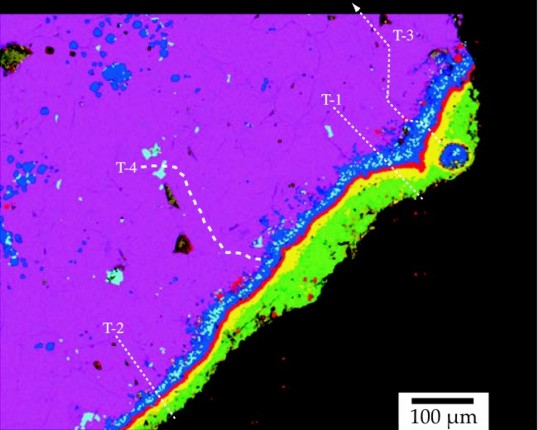An ancient meteorite recorded its changing environment
DOI: 10.1063/1.3595136
An ancient meteorite recorded its changing environment. In the past decade or so, planetary scientists have significantly changed their view of the protoplanetary disk from which Earth condensed. Once described as having well-defined concentric zones, the disk is increasingly seen as a dynamic place whose materials could travel huge distances away from or toward the Sun. Now former University of California postdoc Justin Simon (currently a research scientist at NASA’s Johnson Space Center) and colleagues have used oxygen-isotope analysis to document what appears to be the wild ride of a meteorite fragment that formed early in the solar system’s history. The relative abundance of oxygen-16 and oxygen-17 indicates the radius at which the primitive material incorporated oxygen. That’s because solar radiation able to liberate 17O from carbon monoxide (C17O) is less attenuated as it travels through the disk than is the radiation that encounters the more prevalent C16O. Regions of the disk far from the Sun thus have an extra bit of 17O that can be integrated into meteorites. With exquisite precision, the Simon team determined relative oxygen isotope abundances along four transects through a pea-sized piece of the Allende meteorite. In the figure, colors represent different minerals. Reading from inside to outside, the group found regions that were 16O rich, poor, then rich again. Conceivably the fragment remained stationary in a part of the protoplanetary disk with a dramatically changing environment. But a more natural interpretation is that the isotope signature represents a stamped, roundtrip ticket of a journey that began within the orbit of Mercury and extended beyond that of Mars. (






